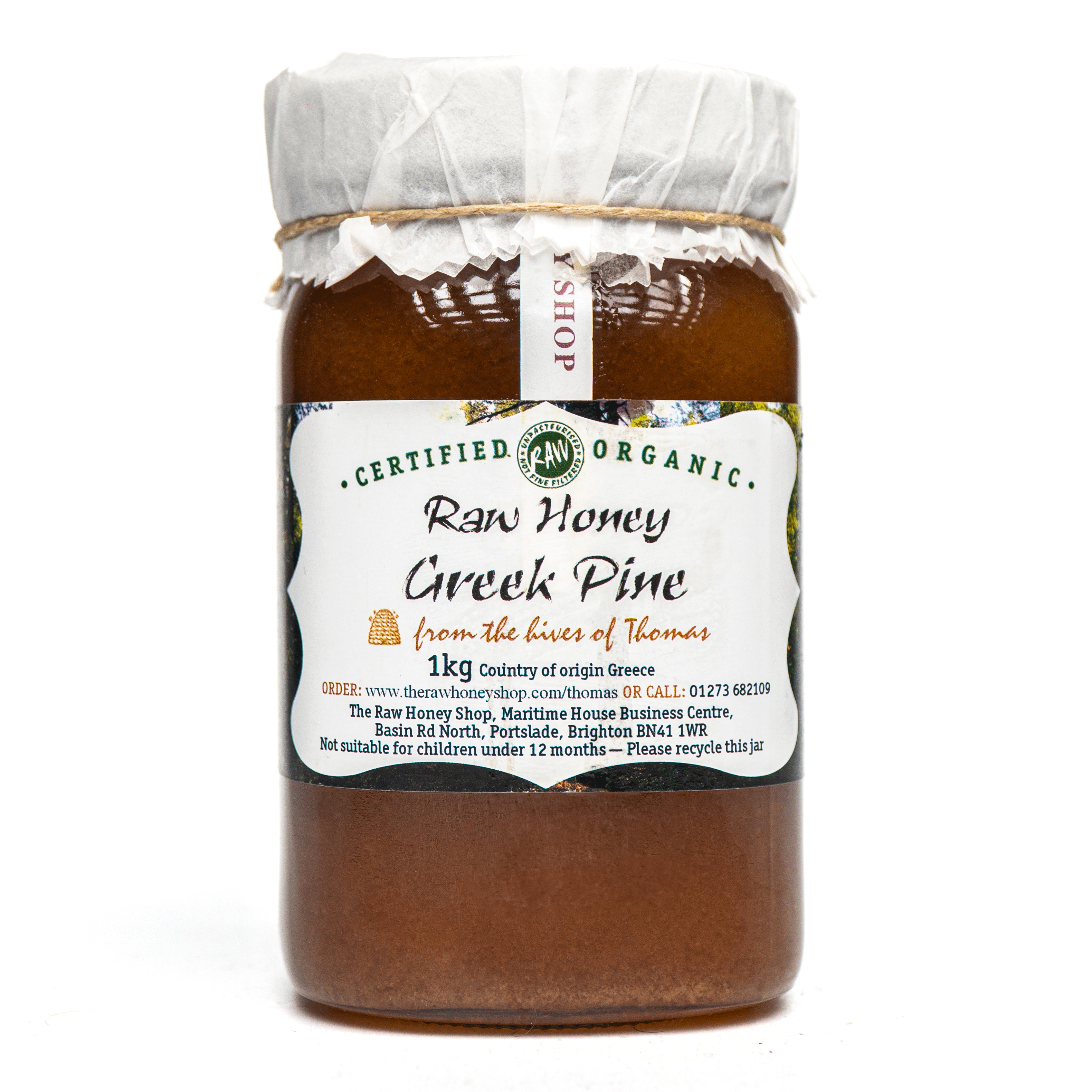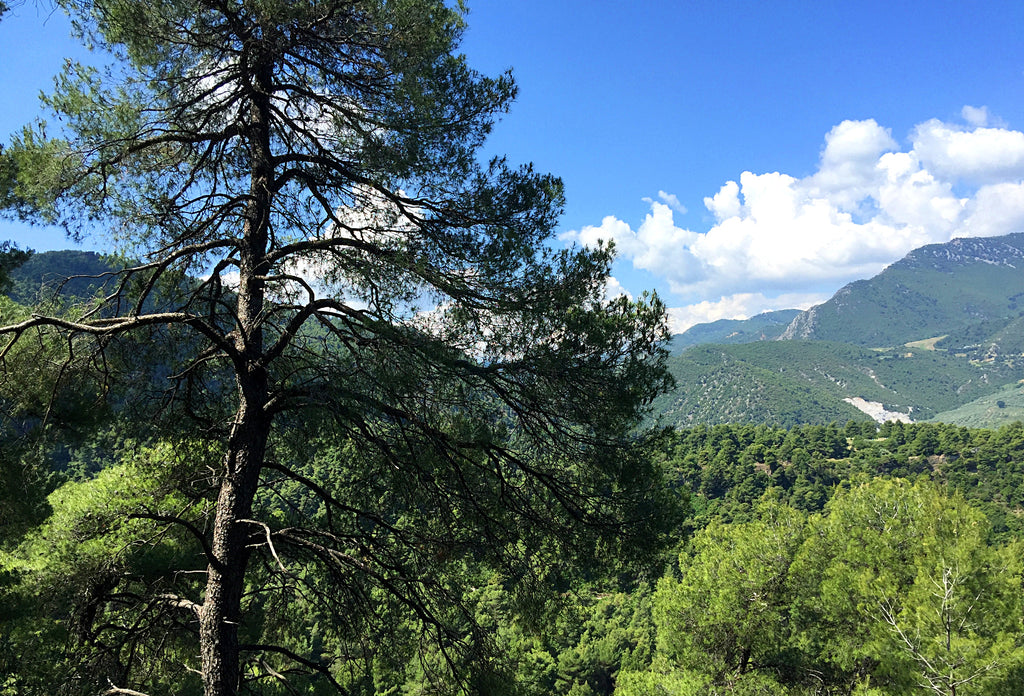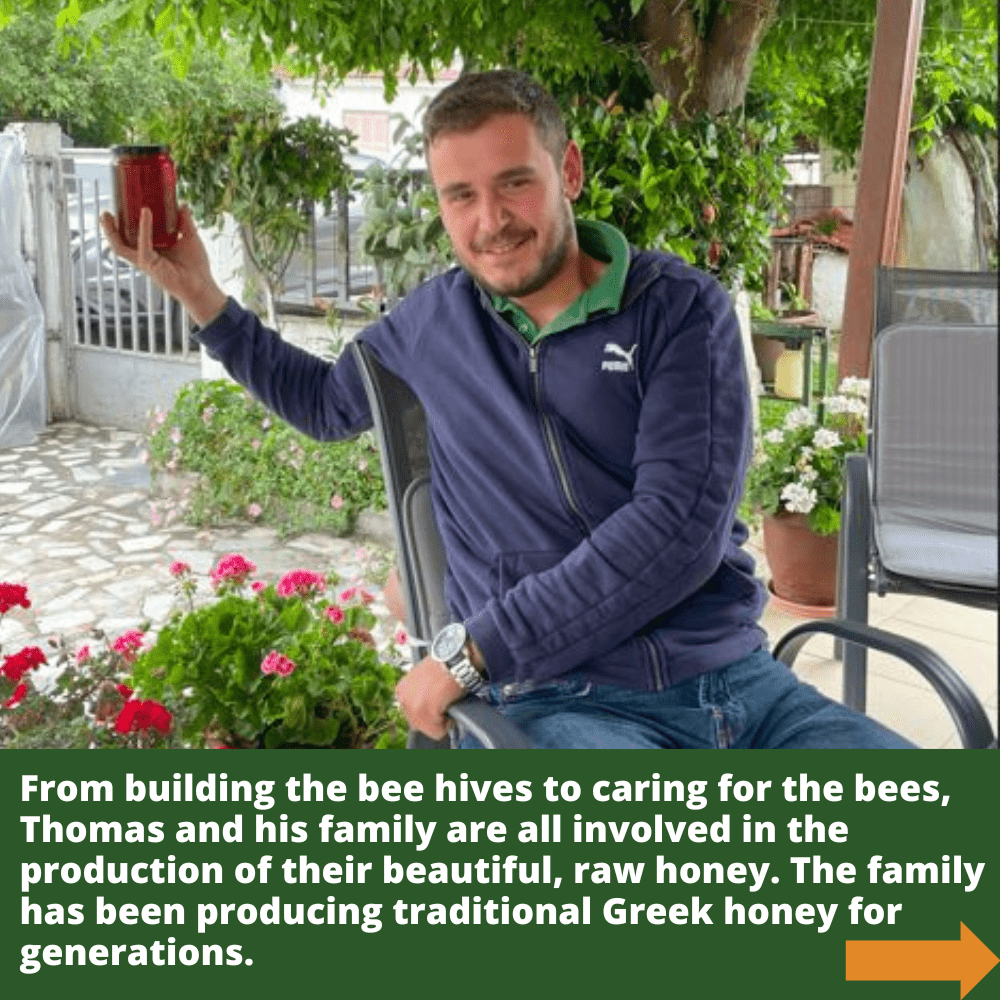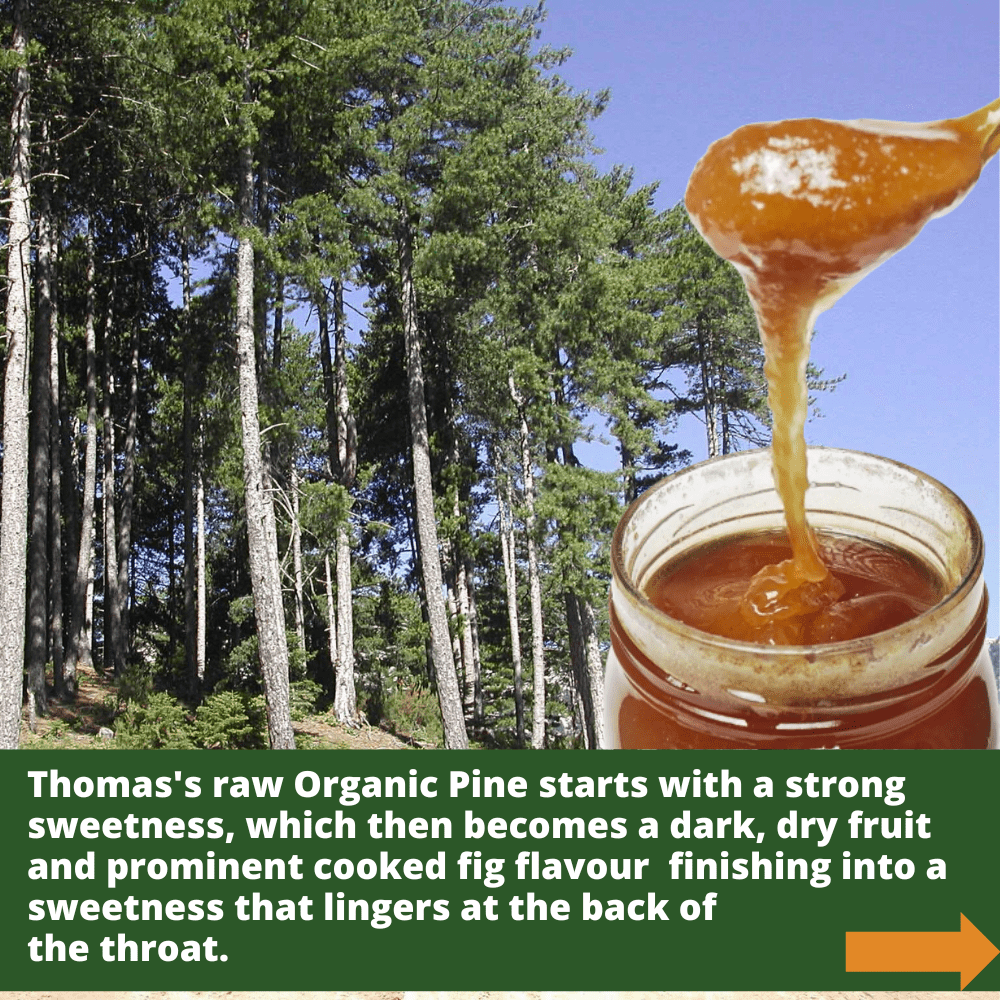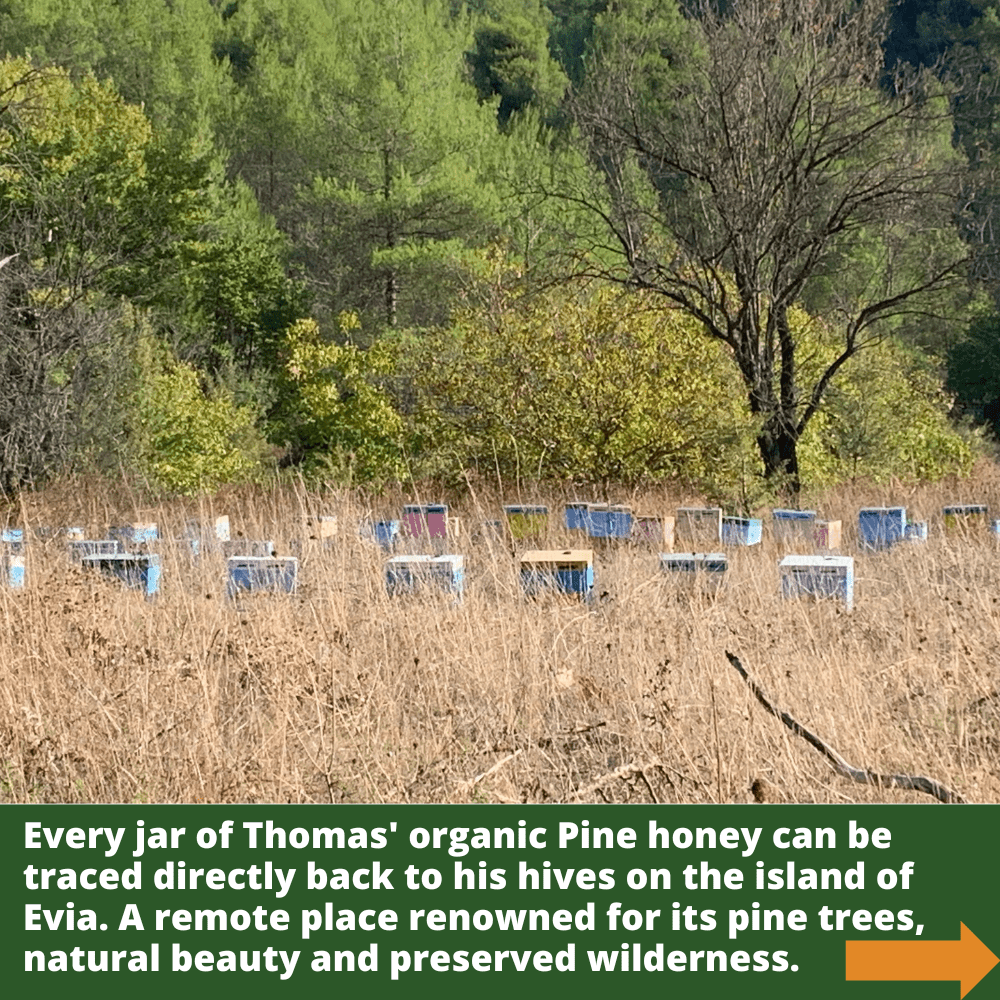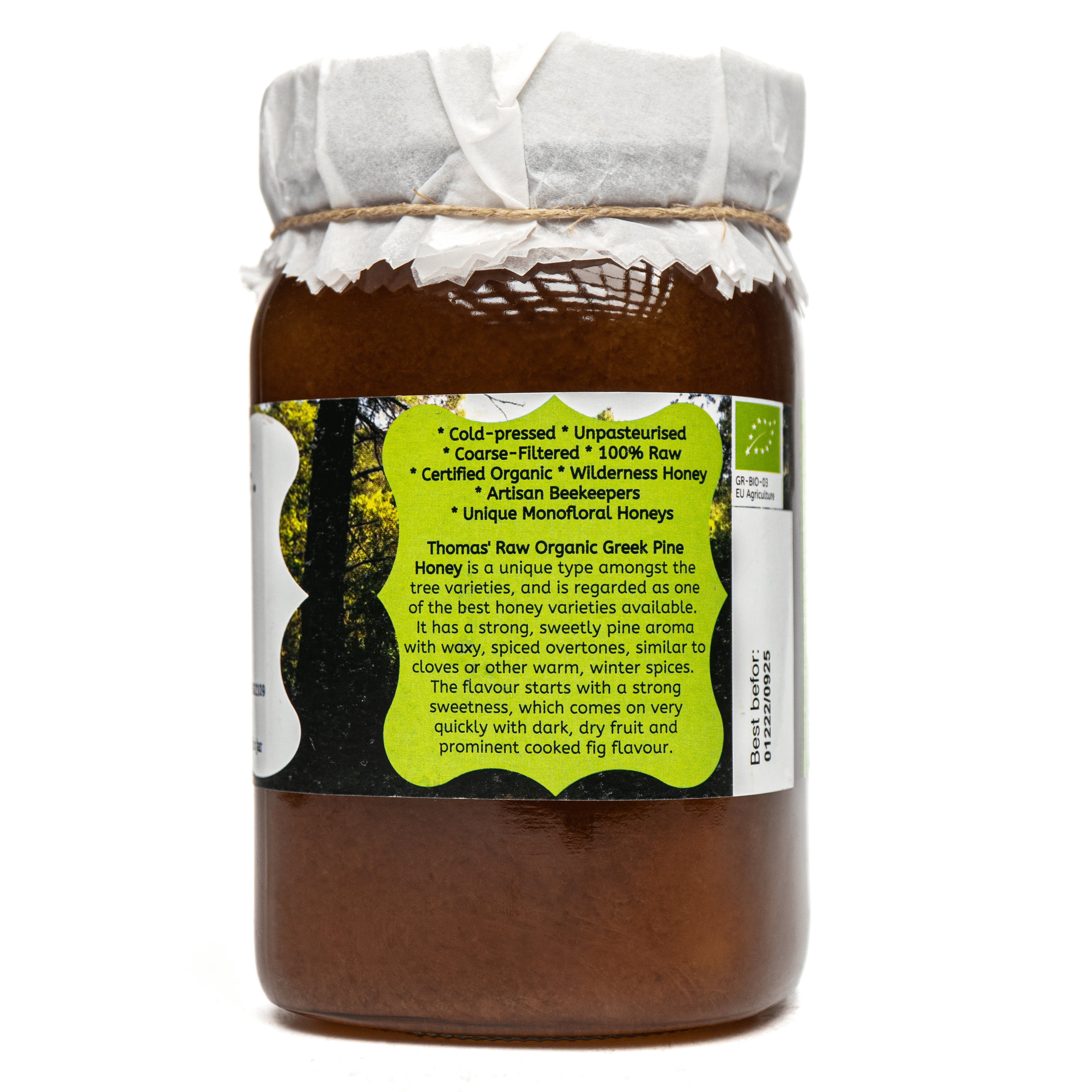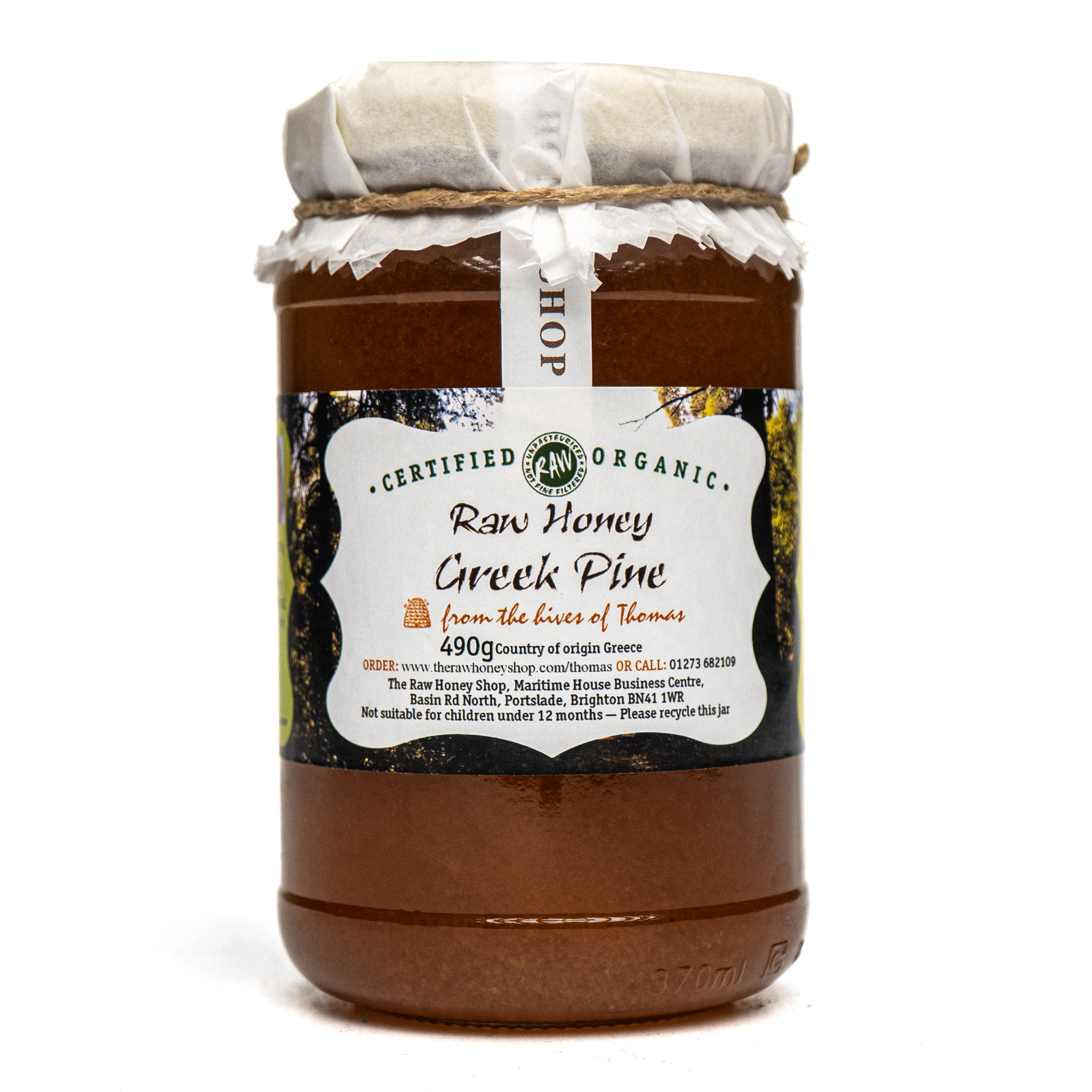Artisan Raw Greek Organic Pine Honey
- Regular price
- EUR 31,95
- Sale price
- EUR 31,95
- Regular price
-
EUR
Artisan Raw Greek Organic Pine Honey - 1kg
Thomas' Raw Greek Organic Pine Honey is a unique type amongst the tree varieties, and is regarded as one of the best honey varieties available. It has a strong, sweetly pine aroma with waxy, spiced overtones, similar to cloves or other warm, winter spices. The flavour starts with a strong sweetness, which comes on very quickly with dark, dry fruit and prominent cooked fig flavour, finishing into a sweetness that lingers at the back of the throat. It would pair particularly well with white, creamy cheeses or a rich vanilla ice cream.
Colour: This particular honey is dark brown when runny, turning a lovely, creamy yellow when crystalised.
Where does the honey come from?: This variety of Greek pine honey comes from Papades, located on the island of Evia. This is a remote place renowned for its pine trees, natural beauty and preserved wilderness.
Who produces this honey?: This pine variety comes from the family of Thomas, who is planning to take over the family's hives, located in secluded forest glades. Thomas, who works with his family to tend bees and produce raw honey in the mountains of southern central Greece, has great enthusiasm for raw honey and natural hive products.
What about the tree the honey comes from?: The pine tree is part of the conifer family, a resinous evergreen that can grow up to 80 metres in height. They generally live between 100 and 1000 years, sometimes even longer, the oldest one to date was found to be 4900 years old!
Common Uses: Pine honey is particularly good to use in Greek yoghurts, breads and ice cream, but perhaps best is to simply enjoy this delicious prized honey on its own.
Greek pine honey facts: Honey from pine trees has unique attributes - the bees love to feed on the liquid the aphids leave after they burrow into the bark and pine cones drinking the sweet tree sap.
How Raw Honey is different from Processed Honey: Raw honey generally means the honey has not been processed, it has come from the hive to the jar with minimal interference. Most supermarket honey is highly processed to make it look more attractive, usually it has been largely drained of pollen, heated and blended. Raw honey tends to vary from batch to batch, this is because it is not processed in a factory, filtered or heated to look homogeneous. Raw honey changes with the season and climate, the soil, what the bees feed on, and the nature of the colonies.
Crystallisation: Please know that raw honey does crystallise and is a natural process of raw honey (therefore we cannot except returns on honey that may have crystallised). We indicate on the website the state of each honey - either runny or crystallised but be aware this is to the best of our knowledge and the state can change quickly. If you want your honey runny and it has crystallised it's very easy to return it to runny go to this link Runny Honey or see this section under our FAQ's Why Is My Honey Crystallised?
We only supply raw honey because we believe this is how all honey should be. If you don't want your honey to crystallise then raw honey probably isn't for you.
For more information on why honey sets visit this article and for a more scientific explanation go to wikipedia.org, search ‘honey’ and then go to the section headed ‘Physical and chemical properties’. https://en.wikipedia.org/wiki/Honey
About Us: Here at The Raw Honey Shop we take honey very seriously and we believe honey should be RAW, unpasteurised and 100% natural. Since 2008 we€„¢ve been introducing our customers to a whole new world of pure all natural unpasteurised raw honey. With a product catalogue consisting of over 30 different raw and organic honeys we have a variety to suit all tastes. Thank you for visiting our shop and we look forward to introducing you to a world of raw, pure and truly wonderful natural honey, the way the bees would want it!
*Product photo is representative of this product. Honey colour and texture may vary depending on the season and level of crystalization. Please check the product title and description for accurate contents.*


